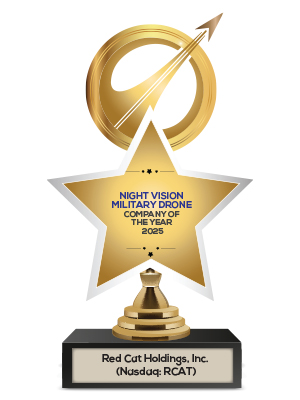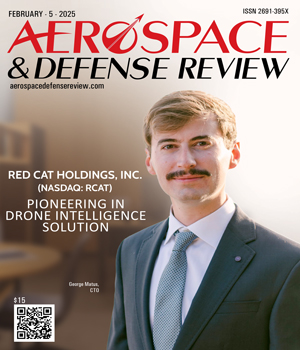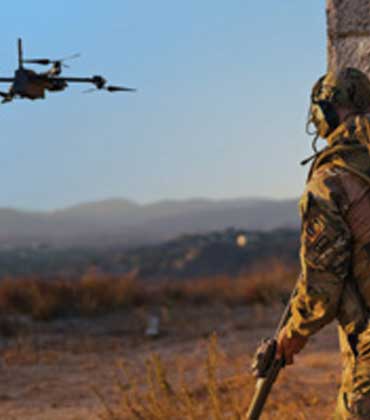THANK YOU FOR SUBSCRIBING
Drones have emerged as a transformative force in modern warfare, drawing compelling parallels to the impact of the machine gun over a century ago. Historically, powerful cavalry units could be effectively countered by just a few machine gunners, demonstrating how advancements in technologies and techniques can shift the balance of power on the battlefield. Today, this concept is mirrored in the use of drones, where a handful of inexpensive and compact drones can eliminate an armored tank battalion before it even reaches the front lines. A key player in this evolving battlefield is Red Cat Holdings, Inc., which specializes in end-to-end drone solutions for U.S. military forces and their NATO allies. Its subsidiary, Teal Drones (Teal), is redefining the capabilities of unmanned systems by providing superior aerial surveillance and short-range reconnaissance (SRR) capabilities.
Direct Field Acoustic Testing
The power of creative thinking lies in transforming the mundane into something extraordinary. For Bob Goldstein, the founder of Maryland Sound International (MSI), this adage became a reality when NASA and Orbital Sciences Corporation approached him in 1998 to provide an alternative to traditional reverb chambers used for acoustic testing of spacecraft and satellites. The reason? These chambers were extremely expensive to build, run and maintain, and their distant locations from manufacturers often presents logistical challenges. Companies face substantial costs and risks when shipping expensive and mission-critical spacecraft or satellites to distant test facilities—or, even when handling and moving a sensitive and delicate spacecraft from one test bay to the room right next door. MSI pioneered the solution to this predicament. Having designed sound systems for the entertainment industry, the company was already well-versed in the science of acoustics, as well as the complex logistics of running live sound systems. Leveraging this core expertise, MSI conducted an initial experiment to ensure that satellites housed in a rocket’s fairing could survive the extreme vibrations caused by launch noise, which can exceed 150 decibels (dB). The first few acoustic tests worked well enough with simple commercial loudspeakers and manual equalizers for Bob Goldstein to justify diving head-first into the business. Over the next decades—and after blowing up millions of dollars’ worth of commercial-off-the-shelf concert loudspeakers—the company focused into incrementally improving, designing, assembling, and manufacturing its own purpose-built Direct Field Acoustic Testing (DFAT®) systems. “Over the past two decades, we have now successfully acoustically tested nearly 230 spacecraft, a number that continues to steadily grow,” says Goldstein. “Our portable DFAT system enables troubleshooting and testing to be done right where the satellite is built, eliminating both the high costs and risks associated with any form of transportation,” he adds. Recognizing the immense value this new approach could bring to space missions, MSI in 1999, invented DFAT (also known now as Direct Field Acoustic Noise Testing or ‘DFAN Testing’). MSI-DFAT is the world’s first company dedicated to providing state-of-the-art DFAT® services and equipment. .
Mission Critical Solution Provider
Neil Armstrong’s legendary words, “That’s one small step for man, one giant leap for mankind,” reached millions of captivated listeners on Earth as humanity took its inaugural steps on the Moon. Behind this historic transmission was the high-frequency (VHF) communications technology—developed by L3Harris Technologies—that ensured Armstrong’s voice reached millions of eager listeners on Earth. The company’s legacy, which began with the Apollo missions, will continue with NASA’s Artemis II mission, set to return humans to the lunar surface in 2025. L3Harris’s advanced communications systems will once again be crucial in maintaining reliable contact between the astronauts and mission control, ensuring the success and safety of this ambitious endeavor. Powering the Artemis II Mission and Beyond Through its Aerojet Rocketdyne sub-division, L3Harris delivers the RS-25 engines, the core propulsion system for the Space Launch System (SLS), the most powerful rocket ever built. These engines are an evolution of the renowned Space Shuttle Main Engines (SSMEs) that powered 135 shuttle missions, now re-engineered for deep space expeditions. Leveraging advanced manufacturing techniques and production efficiencies, these next-generation RS-25s offer enhanced thrust capabilities while reducing unit costs by over 30 percent compared to its shuttleera counterparts. The SLS, equipped with four of these formidable engines, will propel Artemis II’s four-member crew beyond Earth’s orbit, marking the first crewed mission beyond low Earth orbit in over five decades. While the RS-25 engines provide the necessary propulsion, L3Harris’s state-of-the-art audio communications system will ensure seamless connectivity between the astronauts and mission control. Designed to meet NASA’s stringent standards, this system comprises an audio control unit, a speaker unit and a lightweight audio interface unit that attaches to an astronaut’s suit. Featuring five voice channels, low power consumption and 13 alarms for real-time situational awareness, the audio system exemplifies L3Harris’s dedication to innovation, reliability and astronaut safety. The system’s modular architecture also highlights its adaptability. Its strategic design will support NASA’s Artemis program and position L3Harris to contribute to future human spaceflight initiatives, including reusable landers and commercial spaceflight endeavors. With a vision extending to Mars, L3Harris is poised to be a pivotal player in the future of space exploration by pushing the envelope of aerospace engineering and capturing the defining moments of humanity’s journey into the cosmos. Guardians of the Earth and the Skies L3Harris’s contributions to space exploration are undeniably impressive, but its innovation doesn’t end at the edge of our atmosphere. Its technological mastery extends deep into the heart of national security and defense, where its groundbreaking solutions play a vital role in protecting our planet and its interests from the ground up. A prime example of this commitment is its Viper Shield, an all-digital electronic warfare (EW) suite custom-designed to enhance the survivability and mission success of the nextgeneration F-16 Block 70/72 fighter jets. This advanced system is a virtual electronic shield, safeguarding pilots against sophisticated, ever-evolving threats in increasingly complex battlespace scenarios.
CXO INSIGHTS
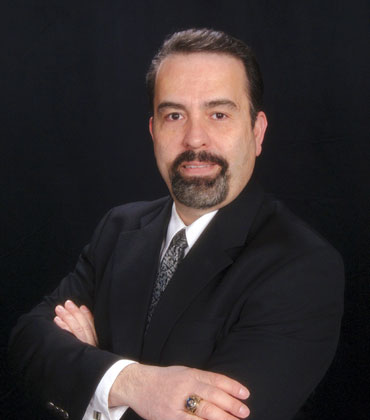
Designing Strategies for Innovating Supply Chain Management
Adrian Quinones, Director of Supply Chain, Curtiss-Wright Corporation
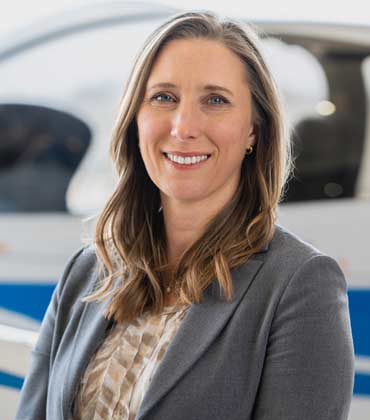
Insights into Streamlining Flight Operations
Carrie Haase, Chief Pilot, Aurora Flight Sciences

An Operator Walks Up to a Machine Tool
Paul Guerrier, Manufacturing Engineering Manager, Moog Inc [NYSE: MOG-A]

Jetsetting Journeys: A Career Soaring from JFK to Unifi's Unique Aviation Landscape
Luigi Taliercio, Vice President of Operations, Unifi
IN FOCUS
EDITORIAL
Accelerating Innovation In Aerospace And Defense
The accelerating pace of global security challenges and rising operational demands are driving a thrilling wave of innovation in aerospace and defense. The pursuit of faster, smarter and more reliable systems is reshaping the landscape, driving innovation in key areas such as materials science, autonomous systems and next-generation propulsion. Organizations that prioritize technological excellence are meeting today’s complex requirements and setting new industry benchmarks. Reports highlight that the global aerospace and defense market, valued at $839.57 in 2024, is projected to reach $1326.14 by 2032 at a CAGR of 8.8 percent. Fueling this transformation are cutting-edge technological trends reshaping aerospace and defense by driving innovation, improving operational efficiency and addressing modern challenges. Latest trends in AI are instrumental in enhancing flight safety. Autonomous systems and predictive maintenance aid in optimizing flight operations. Additive manufacturing is revolutionizing aircraft production. It reduces lead times and manufacturing costs. Advanced defense equipment, such as hypersonic weapons and directed energy systems, are providing superior capabilities for tactical superiority. The Internet of Military Things is strengthening situational awareness. It enables real-time decision-making across military operations. This edition of Aerospace and Defense Review presents insights from industry leaders and innovators driving technological advancements that are transforming the sector. It features Paul Guerrier, manufacturing engineering manager at Moog, who highlights AI’s transformative potential in aerospace manufacturing, enabling defect reduction, boosting productivity and supporting workers through seamless humanAI collaboration. Carrie Haase, chief pilot at Aurora Flight Sciences, emphasizes the integration of autonomy and real-time analysis to enhance safety, streamline testing and improve human-machine collaboration in aerospace operations. We hope this edition, helps you unlock new opportunities, drive technological advancements and position your organization at the forefront.

However, if you would like to share the information in this article, you may use the link below:
https://www.aerospacedefenserevieweurope.com/edition/05-february-2025-15.html



